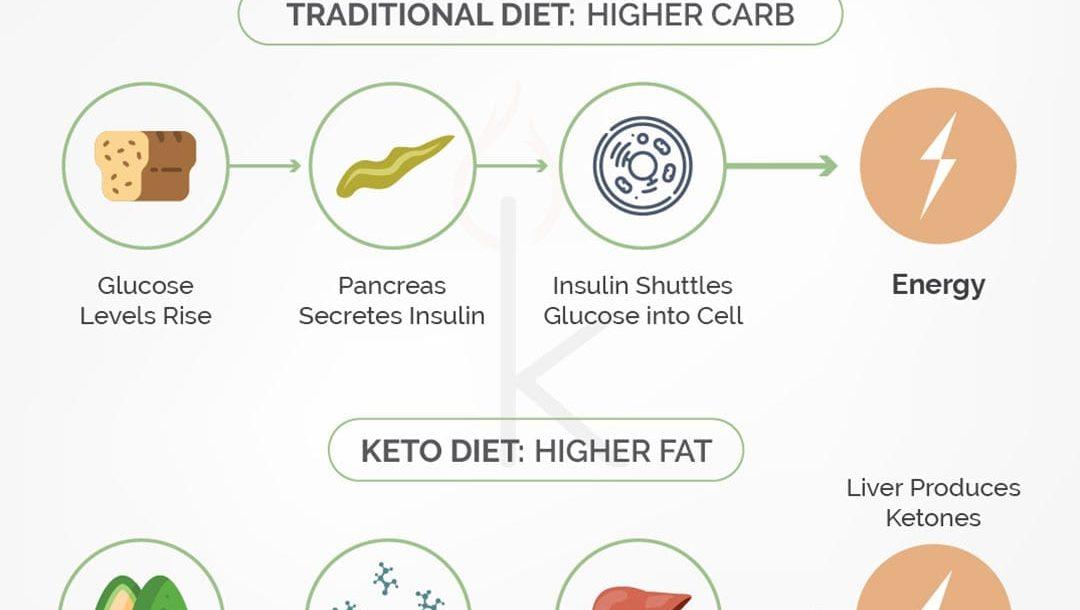Transitioning into a ketogenic lifestyle, characterized by a high-fat, moderate-protein, and low-carbohydrate diet, has gained considerable attention in recent years for its potential health benefits and weight management capabilities. As more individuals seek to embrace this metabolic shift, understanding the most effective methods for a seamless transition becomes crucial. This article delves into the strategic approaches that facilitate a successful adoption of the ketogenic lifestyle, analyzing the physiological underpinnings, dietary adjustments, and psychological considerations essential for long-term adherence. By examining evidence-based practices and common challenges, we aim to equip readers with the knowledge and confidence to navigate this dietary change effectively, ensuring both immediate results and sustainable health outcomes.
Understanding the Science Behind Ketosis for Effective Transition
To effectively transition into a ketogenic lifestyle, it’s crucial to grasp the biochemical processes that underpin ketosis. At its core, ketosis is a metabolic state where the body shifts from using glucose as its primary energy source to utilizing fats. This occurs when carbohydrate intake is drastically reduced, prompting the liver to convert fatty acids into ketones, which then serve as an alternative fuel source. This metabolic shift not only supports weight loss but also enhances mental clarity and energy levels. Understanding this process can empower you to make informed dietary choices, ensuring a smoother transition.
- Initial Adaptation Period: Be prepared for the “keto flu,” a temporary phase of fatigue and headaches as your body adjusts to this new fuel source. Staying hydrated and replenishing electrolytes can ease this transition.
- Fat Intake: Increase healthy fats such as avocados, nuts, and olive oil to encourage ketone production. This helps in maintaining energy levels while reducing cravings.
- Protein Balance: Consume moderate protein to prevent gluconeogenesis, where excess protein converts into glucose, potentially disrupting ketosis.
By understanding these scientific principles, you can navigate the ketogenic transition with confidence, optimizing both health and performance.
Crafting a Balanced Ketogenic Meal Plan for Optimal Results
Embarking on a ketogenic journey requires a strategic approach to ensure both nutritional adequacy and dietary satisfaction. A well-structured keto meal plan should focus on the right balance of macronutrients while incorporating a variety of foods to prevent monotony and nutrient deficiencies. Begin by identifying high-quality sources of healthy fats, such as avocados, nuts, seeds, and olive oil, which will become the cornerstone of your meals. Incorporate moderate amounts of protein from sources like grass-fed meats, free-range poultry, and fatty fish, while keeping an eye on portion sizes to avoid excess protein intake that could interfere with ketosis.
To further enhance your meal plan, consider the following tips:
- Vegetables: Opt for low-carb, nutrient-dense vegetables such as spinach, kale, and broccoli, which can be sautéed in butter or coconut oil for added flavor.
- Dairy Alternatives: If you consume dairy, choose full-fat options like cheese and cream, but be mindful of your body’s response to dairy.
- Meal Timing: Experiment with intermittent fasting or time-restricted eating to maximize fat-burning potential.
- Hydration: Stay well-hydrated and include electrolytes in your diet to combat the initial side effects of transitioning to a keto lifestyle, often referred to as the “keto flu.”
By carefully selecting and balancing these components, you can craft a ketogenic meal plan that not only supports your health goals but also keeps your palate satisfied.
Overcoming Common Challenges in the Initial Ketosis Phase
The transition into ketosis can be challenging due to several common hurdles, but with strategic planning, these can be effectively managed. Hydration is crucial; as carbohydrate intake decreases, the body tends to lose water and electrolytes, leading to symptoms commonly known as the “keto flu.” To combat this, ensure adequate intake of water and consider adding a pinch of salt or consuming electrolyte-rich foods. Fat adaptation is another key element; initially, the body may resist burning fat as its primary fuel source. Incorporating healthy fats such as avocado, olive oil, and coconut oil can aid in this transition, allowing the body to gradually adapt to its new energy source.
Another frequent challenge is craving carbohydrates. This can be mitigated by focusing on nutrient-dense, low-carb foods that are satisfying and filling. Include plenty of leafy greens, nuts, and seeds in your diet to help curb these cravings. It’s also important to be patient and give your body time to adjust. Mindful eating practices can support this by helping you stay in tune with your body’s hunger cues and prevent overeating. By understanding and addressing these challenges, you can successfully transition into a ketogenic lifestyle with confidence and sustainability.
Implementing Sustainable Ketogenic Habits for Long-term Success
Transitioning into a ketogenic lifestyle is not just about altering your diet—it’s about embedding sustainable habits that ensure long-term success. Mindful meal planning is crucial. Start by incorporating a diverse range of low-carb vegetables, healthy fats, and quality proteins into your diet. This not only helps maintain nutritional balance but also prevents the monotony that often leads to diet fatigue. Be sure to monitor your macronutrient intake, as maintaining the right ratio is key to achieving and sustaining ketosis.
Gradual adaptation is another essential strategy. Rather than making abrupt changes, introduce ketogenic principles slowly. Begin by reducing carbohydrate intake incrementally, allowing your body to adjust without the shock of sudden deprivation. This approach minimizes potential side effects like the “keto flu” and helps cultivate a more positive relationship with food. Additionally, prioritize hydration and electrolyte balance to support your body’s metabolic processes during this transition. Incorporating these practices not only supports the shift to a ketogenic diet but also fosters habits that are sustainable and effective over the long term.
- Mindful Meal Planning
- Gradual Adaptation
- Hydration and Electrolyte Balance
